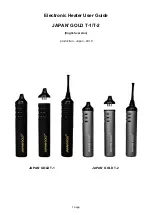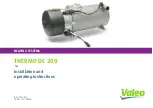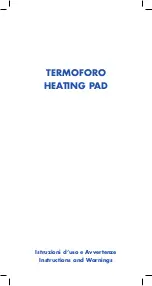
EVERSKY
™
MS-CDF-019
–
Manufacturing Nr: 22
0001→
Version B
Update: 2022/06/14
53/70
Alarm
class
Description
A
The cause has disappeared
and
the alarm must be manually acknowledged.
In the controller, if the alarm is manually acknowledged before the cause has disappeared, this manual
acknowledgment request is requested, and the machine will automatically restart when the cause has disappeared.
Class A and B are identical. The interest is to be able to distinguish the action for the same type of reset.
B
C
The alarm is automatically acknowledged when the cause disappears. It is mainly used as warning, although
depending on the action set, it is possible to stop the machine.
XX.3.
Actions of alarms
In addition to its class, each alarm is defined by an action.
The action of an alarm defines the behaviour of the machine when the corresponding alarm occurs. There are several actions:
Action
Description
Disabled
Used as a warning.
When the alarm appears, the machine continues to operate as if nothing had happened. This action
is used for malfunctions that are not important for the safety or integrity of the machine (e.g. pressure
deviation).
Quick stop
The post-ventilation sequence is not considered, all outputs are deactivated instantly at the onset of
the alarm. The machine stops instantly.
Normal stop
The post-ventilation sequence is considered. This sequence is defined by the shutdown times of the
fans and the fresh air and exhaust air dampers, which determine the effective shutdown time of the
machine.
Reduced speed
The alarm forces the configured speed regime.
Normal speed
XX.4.
Alarm delay
The delay specifies the length of time the cause must be present to activate the alarm. It is a delay in onset.
It is a condition available for all alarms.
/!\ When the delay is set to 0, the alarm is not active.
There is no
delay in the disappearance of the cause. When the cause disappears, the alarm is instantly cancelled.
XX.5.
Alarm threshold
For some alarms, in addition to the onset delay condition, a second threshold condition must be set.
When the criterion has exceeded the threshold within the defined time, the alarm is activated.
The alarm threshold is available for alarms whose cause depends on an analogue value, e.g. temperature too high, pressure or flow
too low, etc.
The hysteresis is zero and not configurable.















































